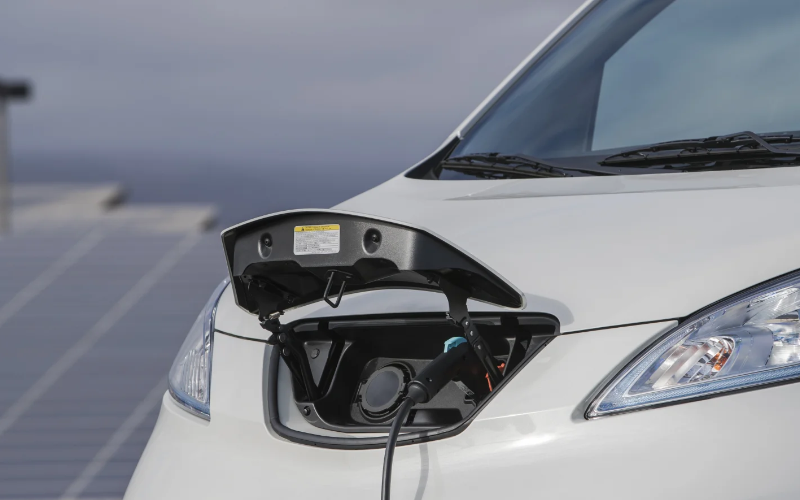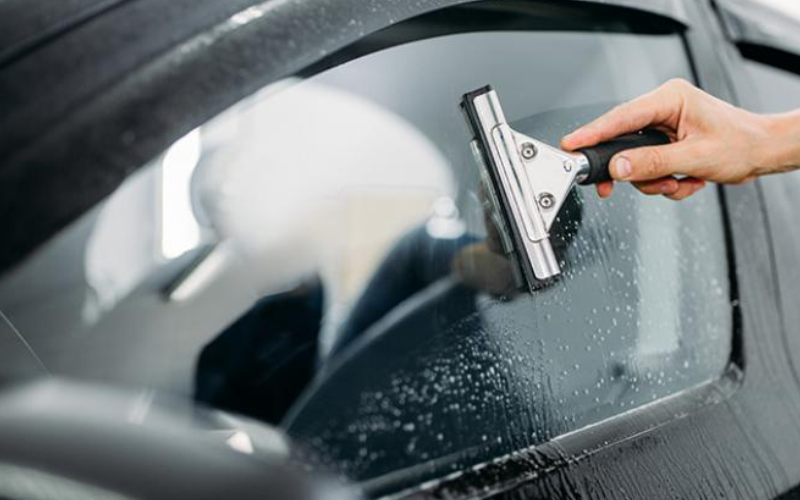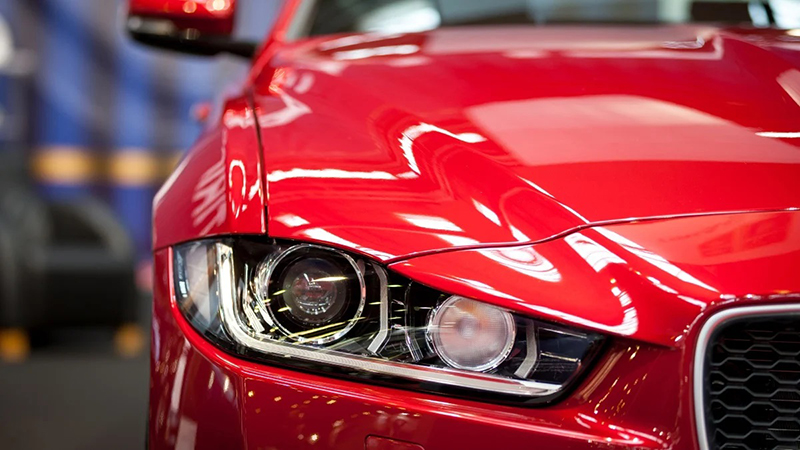Just about every car brand in the world is now actively pursuing electric vehicle development. As you likely are aware, the electric car presents many changes to the way we live and run our cars. There are practices that for decades we have taken for granted that with electric vehicles we have to completely change. Probably the best everyday example is fueling. No longer is the gas station the only place to refuel. You can now do most of your refueling — charging up, to be more precise — at home, and only use public stations when you need them.
Another big area of change, and the focus of today’s blog, is the area of jump starting. This method of starting up the car that for years we’ve accepted as the standard way to get out of dead-battery situations is suddenly in question as we now look at the growing number of hybrids, plug-in hybrids and electric cars on the road? Are these vehicles even capable of jump starting each other or other cars? This is an area we will explore in todays’ blog. First, let’s look at a classic jump start and how it works.
Background – Electric Vehicles and Jump Starting
When it comes to a discussion about jump starting and electric cars, what we have is a situation where something is technically possible, but not advisable whatsoever. EV warranties tend to make it very clear that their vehicles are not designed to be used as platforms for jump-starting other vehicles.
Some might wonder why this is the case. Don’t hybrid and electric cars also come loaded up with a 12-volt battery just like a regular car? The answer is yes they do, but these 12-volt batteries are actually housing some pretty significant differences. Even though both of them say they are “12-volt” batteries, the power levels in the two kinds — internal combustion car, and hybrid/electric are different.
It has therefore been dubbed an unsafe activity by EV producers and is listed as such in warranties. Therefore, attempting to use your EV to jump start another vehicle might void the warranty, which would be an extremely bad idea when you consider just how much it typically costs to replace a hybrid or electric battery pack. The Nissan Leaf battery, for instance, could cost anywhere from CA$5,000 to CA$15,000 (US$12,141) as the case of Clayton Brander in Canada taught us. In that case where the battery was failing outside of warranty, Nissan had one stark suggestion: Buy a new Nissan Leaf.
So, that’s how we’re going to start our blog today. Jump starting with electric vehicles is certainly a technical possibility, but it’s a bad idea nonetheless. Next, we’ll try to explain the problems using two prominent and successful North American examples of hybrid/electric vehicles, the confusingly named Chevrolet Volt and Chevrolet Bolt.
Hybrids and Jump Starting – Case in Point: Chevy Volt
The Volt is the older Chevrolet hybrid car, a plug-in hybrid actually. That means that like the Bolt, it does have to be charged by being plugged into a charging point, unlike regular hybrids where the electrical powertrain is recharged by action of the internal combustion engine. The Chevy Volt has a 12-volt battery, and it also has an internal combustion engine. Surely, the electric powertrain doesn’t get in the way of us using that 12-volt battery for jump starting, does it?
In fact, it does. Even though the Volt has a regular car battery and an internal combustion engine, and even though it’s that engine (not the electrical powertrain) that charges up the Volt, you still can’t (advisedly) use it for jump starting. Why? The 12-volt battery is not a true starter motor.
In this plug-in hybrid car, as has been true in hybrid cars since the first-generation Toyota Prius, the starting mechanism in a hybrid car is actually the electric motor, not that of a more traditional internal combustion starter motor. Remember, when your hybrid car starts up, it’s in electric mode first. It’s only when you speed up that the combustion engine kicks in and takes over. When you are still and traveling at very slow speeds, you are relying entirely on electrical propulsion.
This hasn’t changed as the HEV evolved into the PHEV like the Chevy Volt. Your 12-volt battery in the Chevy Volt is there to give power to your computer system, electrical devices and whatnot, but it’s not a starter motor and it does not crank the engine, nor can it do that for other cars. It’s due to this same principle that your Volt won’t start when your electric powertrain (lithium-ion battery pack) is dead and without power. It has to be charged up for the car to work properly.
What About Jump Starting the Volt?
What if things are reworked and put the other way around? Is it possible to use an internal combustion engine car to jump start the Chevy Bolt? That’s the other important question that many drivers are asking. Having spent so much time telling you what a bad idea using a hybrid like the Volt to jump start another car is, we’re now going to tell you something interesting and different: You can use a regular gasoline-engine car to jump start the Chevy Volt, and in theory other hybrid cars, too.
First of all, there’s plenty of power in a regular combustion engine car to get a Chevy Volt or other hybrid started. While the hybrid battery is not a “starter” battery, the combustion engine car certainly is and has the ability to jump start others. The basic procedure of jump starting is also the same, connecting up your jump cables in the right order as we demonstrated in the video up above.
One thing people might find difficult on their Volt is locating the positive and negative terminals that you need to connect the jumper cables. The battery is in the rear of the vehicle, and if the battery is dead and needs jump-starting, then you won’t be able to open the trunk because it requires power to open. What then? Then we share the good news that in fact, the positive and negative terminals are actually up front, you can connect the jumper cables there.
What we know then is that it is possible to jump start your Volt, and a similar plug-in hybrid where the positive and negative terminals can be accessed. The main problem is within using the PHEV as the initiator of the jump start for another vehicle. That’s where the EV OEMs are frowning.
BEVs and Jump Starting – Case in Point: Chevy Bolt
The next question, then, is do things change when we evolved from the PHEV to the all-electric cars like the Chevrolet Bolt? In fact, no it doesn’t. Once again, the Bolt does house a 12-volt battery, but it’s not used for starting the car up. It’s used to boot up the Bolt’s computer, power the electrics and devices/systems within the car like infotainment, dome lights and more.
The 12-volt battery in your Chevy Bolt is not designed to crank an internal combustion engine and start it up. What’s missing from the EV’s 12-volt battery? The key missing piece is the alternator. That’s the key difference that makes the Chevy Bolt’s 12v battery unsuitable for jump starting others.
But what about stories you read on some forums about people saying it’s fine to use the Bolt to jump start? Once again, similar to the Volt, we have a situation in which you might be able to create the technical possibility for the Bolt to jump start another car, but it is highly ill-advised, and seriously frowned upon by Chevrolet. It may also void your warranty, which as we mentioned above would be very bad news for an aging electric car in need of a battery replacement, which the Bolt will eventually be for many.
Is There a Long-Term Solution?
We’ve determined that when it comes to a hybrid, PHEV or all-electric car, we are dealing with vehicles that are not built for the jump-starting action. This will be one of things we have to try and solve in a different way. Some solutions are already up and on their feet, of course, whether we’re talking about the need.
1, When In Dire Need, You Can Jump Start an EV
We’ve established further above that when it’s done the other way around, with the EV being jump started by another car, it does work. It’s far from ideal, but the 12-volt battery can be brought to life which can at least get the car’s electronics working. If your main lithium-ion battery pack is dead, however, you’ll have to plug-in; that remains a fact.
2. Mobile Charging Services are Coming
As we gradually expand our adoption of all-electric cars, then jump starting really will become a thing of the past. Fortunately, there are services already starting up that can bring another kind of “jump start” to you, namely mobile EV charging services. These are most effectively being adopted in China, where one of the most prominent EV startups, NIO, is offering customers a subscription based roadside assistance model with mobile charging.
Imagine you’re driving in China and you’re out of juice or very close to it at the side of the road, still 40 miles from the nearest charging station. You call up NIO or use the smartphone app and a van labeled NIO Power will arrive to give you a much-needed boost. Why did we say this is more like an evolved jump start? Because the NIO Power van just gives you a small amount of power, enough to get you to the charging station, perhaps a quick burst of 60-80 miles, which would take them between 5-10 minutes.
NIO is also offering a different model that will help us to forget the ideas of jump starting with electric vehicles, which we’ll introduce below.
As you can see from the video above, NIO can offer its service not just to NIO drivers, but also to drivers of other EVs. It shows that the capability and technology is there to find some alternative solutions to these problems.
3. Battery Swapping
The idea of battery swapping is not brand-new. It was initially explored by Tesla as the main ‘refueling’ model that Tesla customers would use instead of dealing with waiting times at charging stations. While Tesla opted out of this model, instead investing in its now world-famous Supercharger stations, Chinese rival NIO has gone the other way.
Battery swap services are another kind of evolution of the jump start idea. Instead of parking up, attaching cables and getting your vehicle a jolt of power that it needs, how about you park up and a system removes your battery entirely and replaces it with a fresh, fully-charged one? This is battery swapping. The whole process at NIO’s centers takes just 5 minutes, apparently.
Conclusion: Jump Starting – An Increasingly Bad Idea
The fact is that using our electric cars for jump starting is not something they were designed for. The good news is that while it was tricky to use trickle chargers on older 12-volt batteries, hooking up a plug-in electric vehicle — hybrid or battery — is now easier than ever which means all we need is the power source and we can get our car back on the road.
Jump starting was a step taken in the age of internal combustion. Not being able to just plug-in your gasoline car was the reason we needed jump starts in the first place. Among the more exciting modern solutions are mobile power vans and similar services like those heavily employed by Chinese EV startup NIO. When you find yourself in need of a boost, you can call up the service, after which a van will show up to give you a blast of 60-80 miles in just a few minutes. It’s designed to get you up and running so you can find your way to your main charging solution.
Instead of thinking of ways to jump start our growing number of EVs, it’s time to embrace the change and accept that jump-starting is set to join the ranks of archaic automotive terms. It could well be a day soon that jump start being used as a colloquialism has to be explained by language experts as originating in the old world of fossil-fuel powered cars.



